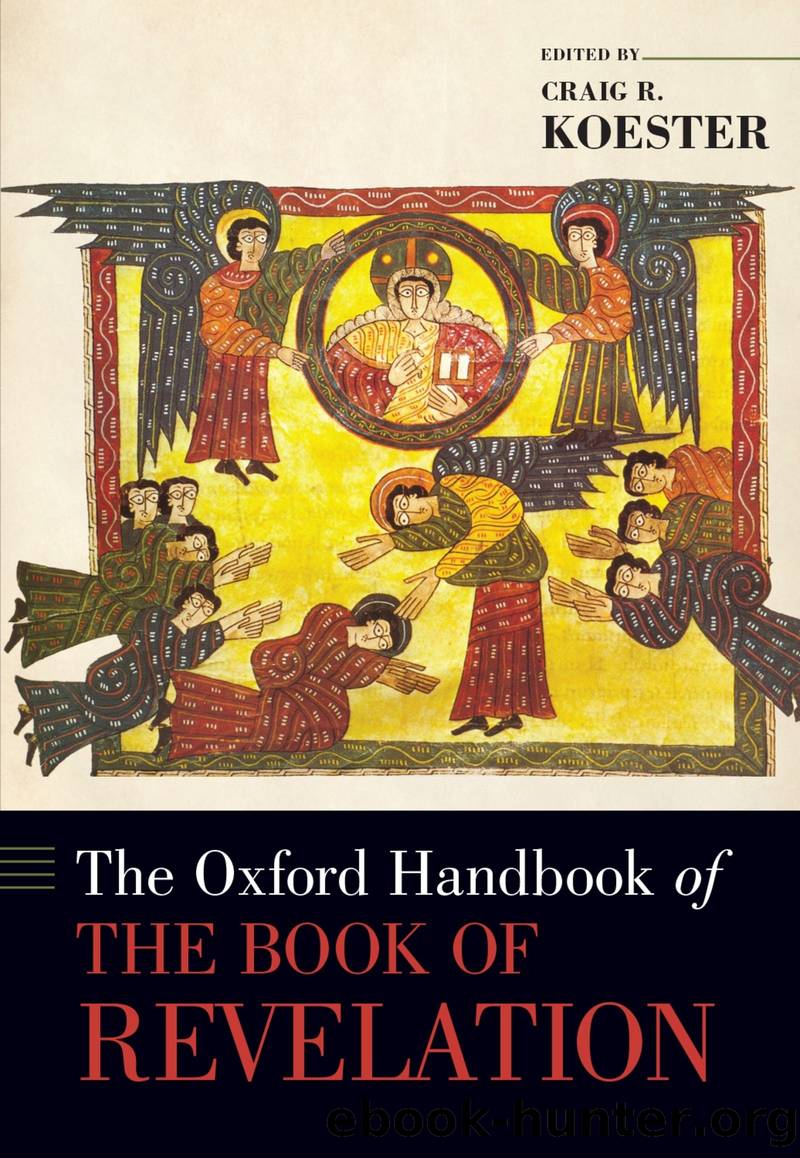The Oxford Handbook of the Book of Revelation by Craig Koester;

Author:Craig Koester; [Koester, Craig]
Language: eng
Format: epub
ISBN: 9780190655457
Publisher: Oxford University Press USA
Published: 2020-09-05T00:00:00+00:00
Creation and New Creation in the Book of Revelation
Our focus now moves from background context to examining the foregrounded text. Beginning with a survey summarizing the diverse ways John labels the created order, we then consider how creation and new creation are portrayed across the entirety of the work.
The Language of Creation
Before we embark on an examination of creation and new creation in Revelation, it is worth pausing to note the language that John uses to describe the created order. These include ktisis (âcreationâ; 3:14), ta panta (âall thingsâ; 4:11; 22:1); kosmos (11:15; 13:8; 17:8), and oikoumenÄ (3:10; 12:9; 16:14). In addition to this, we have numerous instances where individual elements of creation are referred to, both natural (stars, grass, clouds, stones, mountains, rivers, and the sea; cf. McDonough 2000, 228) and supernatural (angels and demons; cf. Koester 2014, 119â20). Yet the predominant terminology employed throughout the text is the language of âheavenâ and âearth.â On some occasions, this terminology simply echoes the conventional merism first encountered in Genesis, in which heaven is the visible sky above and earth represents the land below (see Rev 14:7; 21:1). But Johnâs usage of âheavenâ and âearthâ often encodes a theological meaning pertaining to the duality of the present created order. Hence, heaven frequently denotes the spiritual realm to which John ascends, the transcendent place from which a true perspective can be seen and a world where the divine will is honored (Bauckham 1993b, 31; McDonough 2008, 181â82). At the opposite pole of the duality, the earth is rarely construed as a neutral place; rather, it is the arena in which the suffering faithful must contend with an array of forces that actively resist the sovereignty of God (Bauckham 1993b, 40, 46; McDonough 2008, 183; Murphy 1999, 185). Yet for all that Revelation testifies to a present opposition between the two realms, the ultimate hope of this text is for this dualism to collapse by means of an eschatological merger of heaven and earth (Schellenberg 2006, 471).
Download
This site does not store any files on its server. We only index and link to content provided by other sites. Please contact the content providers to delete copyright contents if any and email us, we'll remove relevant links or contents immediately.
The Lost Art of Listening by Michael P. Nichols(7170)
Why I Am Not A Calvinist by Dr. Peter S. Ruckman(4049)
The Rosicrucians by Christopher McIntosh(3375)
Wicca: a guide for the solitary practitioner by Scott Cunningham(3046)
Signature in the Cell: DNA and the Evidence for Intelligent Design by Stephen C. Meyer(2879)
Real Sex by Lauren F. Winner(2873)
The Holy Spirit by Billy Graham(2782)
To Light a Sacred Flame by Silver RavenWolf(2681)
The End of Faith by Sam Harris(2637)
The Gnostic Gospels by Pagels Elaine(2402)
Waking Up by Sam Harris(2334)
Nine Parts of Desire by Geraldine Brooks(2283)
Jesus by Paul Johnson(2232)
Devil, The by Almond Philip C(2207)
The God delusion by Richard Dawkins(2192)
Heavens on Earth by Michael Shermer(2190)
Kundalini by Gopi Krishna(2094)
Chosen by God by R. C. Sproul(2058)
The Nature of Consciousness by Rupert Spira(1983)
